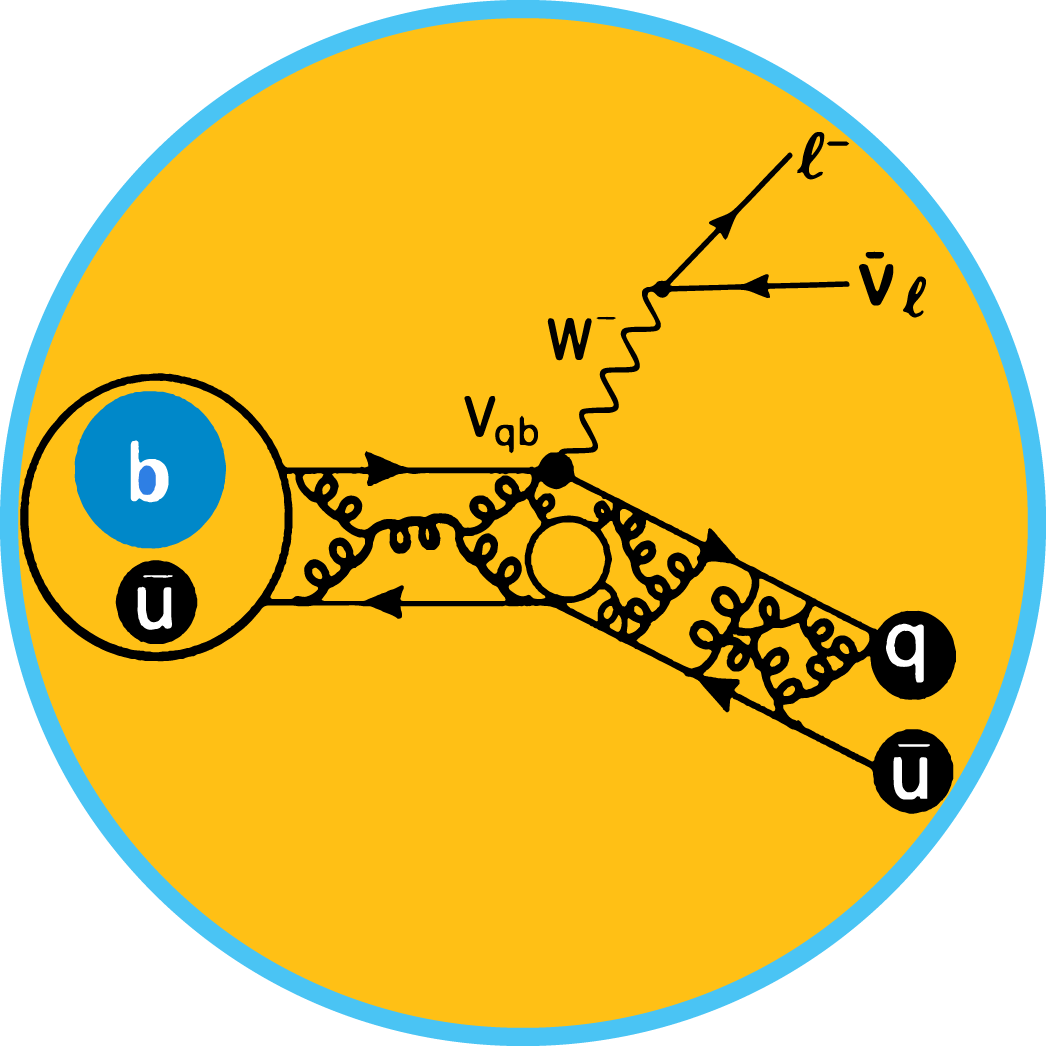In the SuperKEKB accelerator, where the Belle II experiment is taking place, an electron beam is brought into collision with a positron beam at a centre-of-mass energy (i.e. the total energy of the particles involved) of 10.58 GeV. This energy corresponds approximately the rest energy of a particular Y meson (the so-called Y(4S)), a particle in which a b-quark and an anti-b-quark are bound to each other, thus favouring the production of the Y(4S). Since the Y(4S) decays almost exclusively into a pair of b-meson and anti-b-meson, accelerators like the SuperKEKB are commonly referred to as B-factories.
To observe time-dependent matter-antimatter asymmetry effects and to reconstruct the decay times of particles by measuring the distance travelled, the decay products must be in motion. Therefore, the introduced energy of the electron and positron beams is chosen asymmetrically. Otherwise, the b-meson and the anti-b-meson would be too slow, because the energy introduced corresponds almost exactly to the energy needed to produce this pair of particles, so that hardly any kinetic energy remains. The b-mesons produced will continue to decay, whereby a very large number of decay paths are possible: In this way, other particles (such as muons or tau leptons) are produced in a variety of decays, some of which are quite complex. The task and great challenge of physics analysis is to reconstruct these decays (i.e. to determine particle types and formation times) in order to gain new, deeper insights into certain physical mechanisms or even to find new particles that belong to a novel theory beyond the established Standard Model of elementary particles.
Hence, one of the main goals of the Belle II experiment is to search a new physics beyond the Standard Model. In a way, this puts it in competition with the large particle physics experiments, such as the ATLAS and CMS experiments at the LHC (Large Hadron Collider) at CERN. There, among other things, the search is on for direct signals for such new physics in the TeV energy range, i.e. in the high energy range. These direct signals are the production of new particles, with ATLAS and CMS being particularly good at finding even very heavy particles via the direct path. The comparatively low centre-of-mass energy of the SuperKEKB is not sufficient for direct signals of this kind from heavy particles. The Belle II experiment therefore relies on a complementary strategy: instead of operating at high energies, Belle II works in the high-precision range and therefore relies on a high luminosity (i.e. a particularly large number of particle collisions per unit of time). This has the advantage that deviations from the predictions of the Standard Model, so-called indirect signals, can be detected even at low energies. One reason for this is that the high precision can detect even very small deviations. According to the laws of quantum physics, such deviations arise from interactions mediated by new particles. Belle II can therefore detect "footprints" of new particles, even if these particles are too heavy to be detected directly at ATLAS and CMS.
Quarks and leptons appear in three copies, the so-called generations, with the particles differing from their partners in the other generations only by their mass. Processes in which quarks or leptons "jump" from one generation to another as they decay are particularly sensitive to the hoped-for effects of the "new physics". Evidence of anomalous behaviour in such "jumps" is currently being observed in various physics experiments (e.g. at the LHC). Further decays related to this possible "new physics" are now to be measured with particularly high accuracy in the Belle II experiment. The aim is to unambiguously determine the corresponding deviations and to narrow down the properties of the underlying new laws of nature more precisely.
But Belle II can also discover "new physics" in a completely different way: Assuming there are new light particles that interact only very weakly with the known particles, they could be created and detected at Belle II, whereas this is not possible at the LHC. Such light particles play a role in theories about mysterious dark matter.

